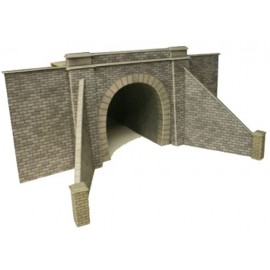A Presflo wagon is a railway wagon specifically designed for the transportation of cement.After nationalisation,...
No products
Product successfully added to your shopping cart
There are 0 items in your cart. There is 1 item in your cart.
Search Tips
What is the most effective way to create a section of tunnel in the landscape on my layout?
Creating a section of tunnel in the landscape can add significant depth and interest to a layout. Here are some steps to help create an effective tunnel section:
- Plan the location and size of the tunnel: Before beginning to build the tunnel, the modeller should decide where the tunnel is to be located and how big it will need to be. This will help determine the materials and the amount of space needed for the tunnel.
- Build the tunnel shell: The first step in building a tunnel is to create the shell. This can be done using a variety of materials, including foam board, plaster, wood or flexible tubing. If using foam board or plaster, the modeller can shape the material to the desired configuration and size using a craft knife or saw. Likewise, if using wood, the modeller will need to cut and assemble the pieces to create the tunnel shell. Flexible tubing such as ducting hose can also be very useful as it offers size and flexibility in shaping whilst retaining significant rigidity and strength.
- Add texture and detail: Once the tunnel shell is in place, the modeller can then add the appropriate details to both the interior and the exterior. This can be achieved using a variety of materials, such as balsa wood, rocks, or even paper mache. The selected materials are then glued in place to create the desired texture and appearance. In some instances, the installation of the track can be left to last to prevent inadvertent damage during the tunnel assembly stage. This is generally possible in shorter tunnel sections but in longer sections, the track may have to be laid down prior to assembly for ease of access.
- Finish the tunnel entrance and exit: To complete the tunnel, the modeller will need to create entrances and exits. this can be achieved by cutting openings in the landscape or by building portals from materials such as foam board or wood or using appropriate tunnel portal kits. When building a tunnel on a layout, it is important to pay attention to the scale and details to ensure that the tunnel looks realistic and fits in with the surrounding scenery. With the right materials and a bit of patience, a modeller can easily create an effective and eye-catching tunnel section for their layout.
Click here to receive the tips weekly in your mailbox. You can unsubscribe at any time.










